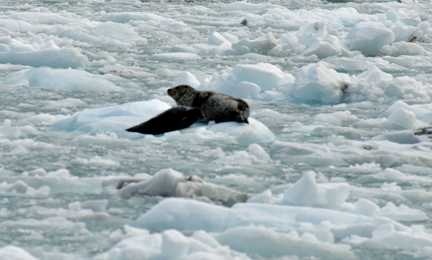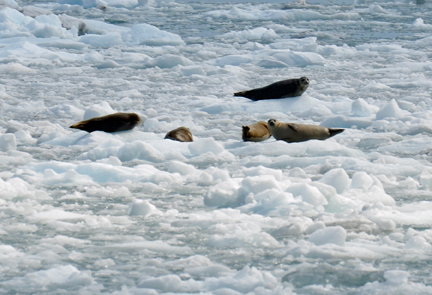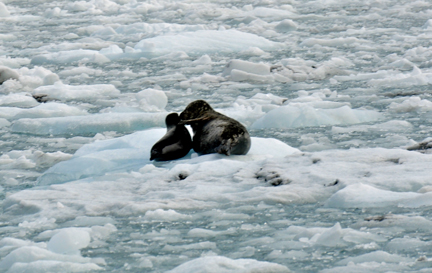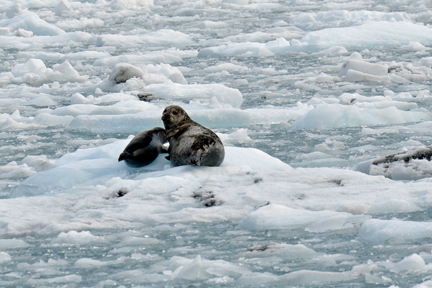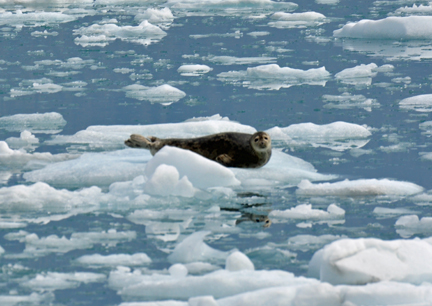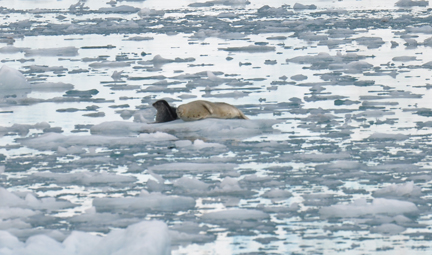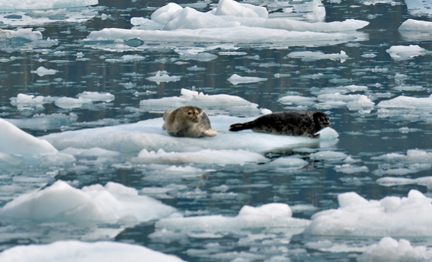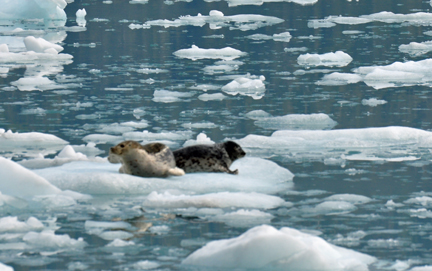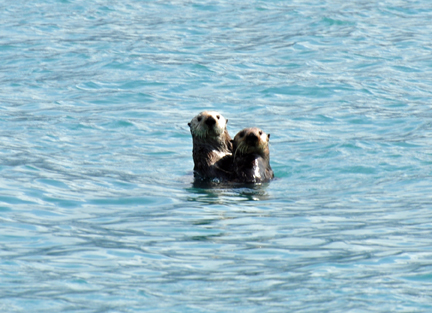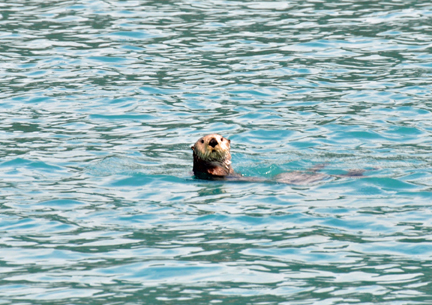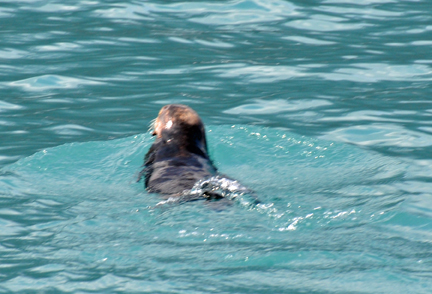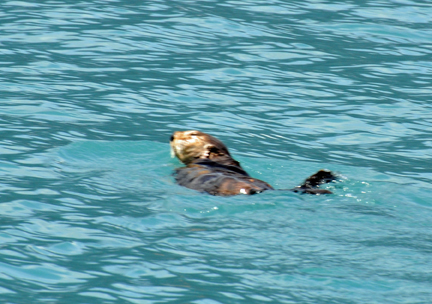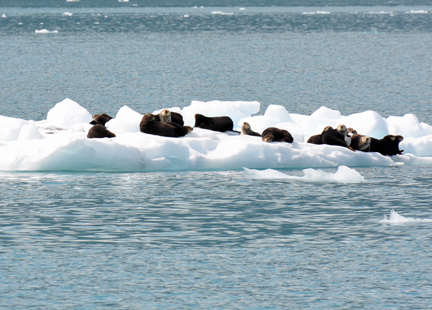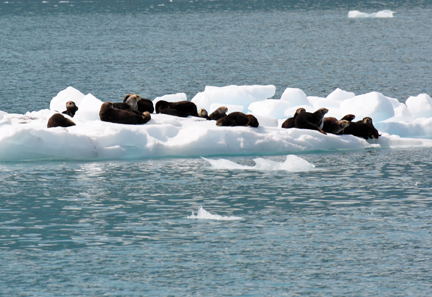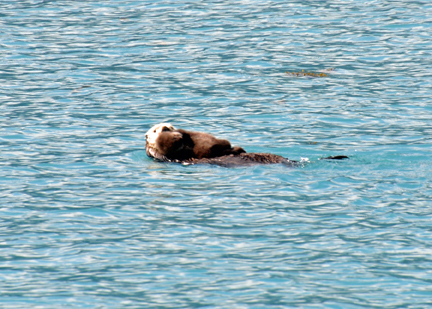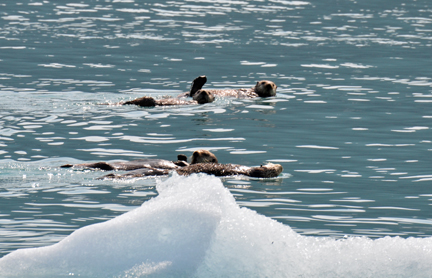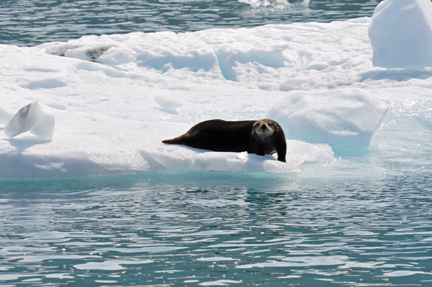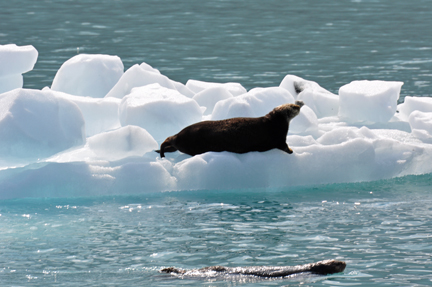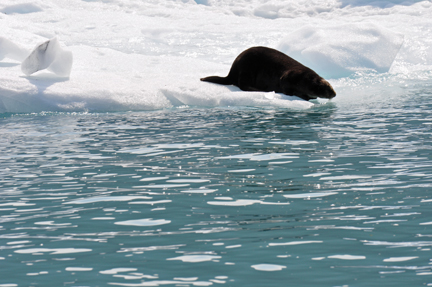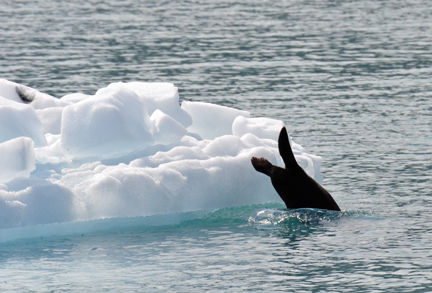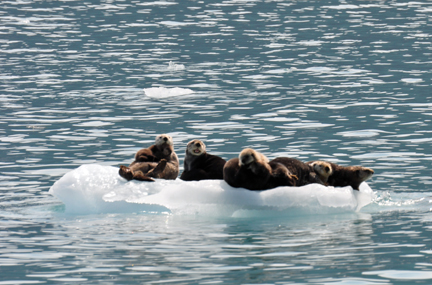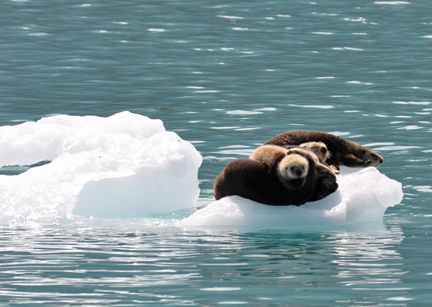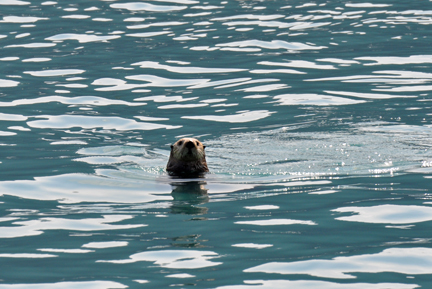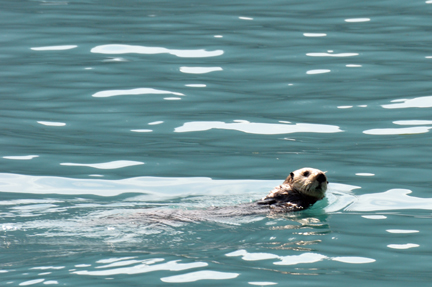| The Common
Seal, also known as the Harbor Seal or alternately spelled
Harbour Seal, is a true seal found along temperate and Arctic marine
coastlines of the Northern hemisphere. They are found in coastal waters
of the northern Atlantic and Pacific Oceans as well as those of the Baltic
and North Seas, making them the most wide-ranging of the pinnipeds (walruses,
eared seals, and true seals). |
| |
|
|
| |
|
|
Common seals are brown, tan, or gray, with
distinctive V-shaped nostrils. An adult can attain a length of 6.1 feet
and a mass of 290 pounds Females outlive males (30-35 years versus 20-25
years). Common seals stick to familiar resting spots, generally rocky
areas where land predators can't reach them, near a steady supply of fish
to eat. Males fight over mates underwater. Females mate with the strongest
males, and then bear single pups which they care for alone. Pups are able
to swim and dive within hours of birth, and they grow quickly on their
mothers' milk. A fatty tissue called blubber keeps them warm. |
| |
\ 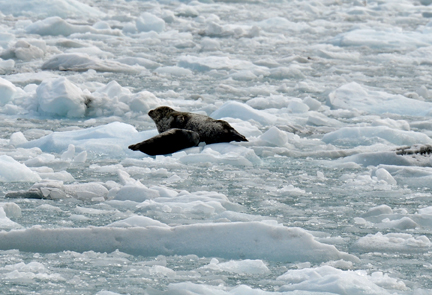 |
|
| Their global population is 400,000 to 500,000,
and subspecies in certain habitats are threatened. Seal hunting, once a
common practice, is now mostly illegal. |
| |
|
|
|
Below: SEA OTTERS |
| The sea otter is a marine mammal native to
the coasts of the northern and eastern North Pacific Ocean. Adult sea otters
typically weigh between 30 to 100 pounds, making them the heaviest members
of the weasel family, but among the smallest marine mammals. Unlike most
marine mammals, the sea otter's primary form of insulation is an exceptionally
thick coat of fur, the densest in the animal kingdom. Although it can walk
on land, the sea otter is capable of living exclusively in the ocean. |
| |
|
|
| |
|
|
| The sea otter inhabits near shore
environments where it can quickly dive to the sea floor to forage. It preys
mostly upon marine invertebrates such as sea urchins, various mollusks and
crustaceans, and some species of fish. Its foraging and eating habits are
noteworthy in several respects. Its use of rocks to dislodge prey and to
open shells makes it one of the few mammal species to use tools. |
| |
|
|
| |
|
|
| Sea otters, whose numbers were once estimated
at 150,000–300,000, were hunted extensively for their fur between
1741 and 1911, and the world population fell to 1,000–2,000 individuals
in a fraction of their historic range. A subsequent international ban on
hunting, conservation efforts, and reintroduction programs into previously
populated areas have contributed to numbers rebounding, and the species
now occupies about two-thirds of its former range. The recovery of the sea
otter is considered an important success in marine conservation, although
populations in the Aleutian Islands and California have recently declined
or have plateaued at depressed levels. For these reasons (as well as its
particular vulnerability to oil spills) the sea otter remains classified
as an endangered species. |
| |
|
|
| |
|
|
| |
|
|
| |
|
|
